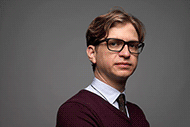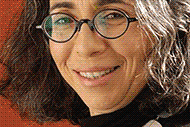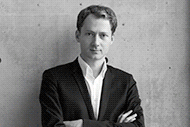08.11
IN PUBLIC
IN PUBLIC
11:30 — 13:30

Talk Host
Director of Architecture and Design at the Victoria & Albert Museum
Guests
Visiting Research Fellow at the Victoria & Albert Museum
Media Artist, Curator and Writer
AGENTS PROVOCATEURS
Founder of the Vitra Design Museum
Consultant and Curator
09.11
THE QUESTION OF PLEASURE
THE QUESTION OF PLEASURE
11:30 — 13:30

Talk Host
Chief Curator at the Design Museum Holon
Guests
Design Editor and Head of Interior Design department at the Holon School of Design
Founder and Creative Director of Belgrade Design Week
AGENTS PROVOCATEURS
Director of MUDE
Director of the Fondazione Bisazza
10.11
INTERIOR vs EXTERIOR
INTERIOR vs EXTERIOR
11:30 — 13:30

Talk Host
Director of the Vitra Design Museum
Guests
Founding Director of Z33
Co-Founder of Realities:United
AGENTS PROVOCATEURS
Architect - Ateliermob
Professor, Architect and Critic
Caixa Geral de Depositos is the exclusive sponsor of the Open Talks.
With the objective of encouraging debate and critical thought, the Open Talks occupy the mornings of the Biennale Inaugural Week with a unique format created in 2005. A Talk Host moderates the dialogue between creators, special guests and several agents provocateurs, in an open and plural discussion where the audience is invited to participate. Addressing questions of contemporary culture from different perspectives, the Open Talks bridge the ties between a specialized and critical audience and the principle configurative contemporary disciplines, including architecture, industrial design, urbanism and communication design.
In this edition, directors and curators of cultural institutions are invited to discuss the role these play in the conceptualization, dissemination and evolution of design.
“To what degree is design a barometer for social, political and Societal change? Is it possible to talk about professional design and architecture as a social good? And where should we look for how design affects how we live together today?
The moment when design and architecture were united in a project of social emancipation has passed, and is firmly part of modernist history. But it still seems that product design, urbanism and technology are the disciplines that manifest political change.
Think of the industrial and interaction design involved in the now ubiquitous infrastructures of security and surveillance that define the public realm in European cities today. Or the global connectivity that leads to privately owned, supra national pieces of digital design (like Facebook or Twitter) forming a central role in public discourse. Or even the rise of the Smart City, a model neo liberal reduction of the city to measurable systems. These infrastructures are design, they tell us a lot about how we live today, but design museums, schools and publications treat them unevenly.
This talk will bring together curators and practitioners engaged in working with design as it bears on how we live together. Each can bring examples of how we might sketch a relationship between design and society, but each avoids the notion that designers must somehow solve the world's problems to be relevant to it.”
Kieran Long
“Design and architecture exhibitions require the visitor to demonstrate an ability to read both conceptually and materialistically at the same time, they demand awareness and willingness to use a new language: the design language. Visitors who walk into familiar spaces and look at familiar objects are confronted with an unfamiliar curatorial concept-text-context. For them it seems the only intuitive and logical thing to do is to touch/sit or to wear. The use of our hands, in combination with all our other senses, is the safe and automatic default behaviour in the first moments we spend experiencing a new environment. So what do you do in a museum? A place where you learn something new? Experience something exciting? Explore new territories? Would we be satisfied with an inspiration experience? Just stretching our minds? And how is it all connected to pleasure?”
Galit Gaon
“The interior is the overlapping area of design, architecture and many other disciplines. It is an “inner space” that reflects the taste, needs and psychological condition of its inhabitants. Occasionally it is designed by experts - in retail or hotels – yet on the other hand, the private interior has become an individual collage of found items, Ikea objects, vintage goods and of a lifestyle industry that tries to shape our tastes. It is invaded by new technologies, media and the increasing idea of sharing the private realm with a digital audience. While media facades communicate the inside of a building, the outside space is acquiring more and more aspects of a private environment where we can work thanks to W-Lan and spend more and more time thanks to airport lounges and other semi-private-public zones offering all kinds of comfort.
This raises questions that address designers and architects, but also a broader creative community: has the exterior become the new interior? What needs and desires are reflected in contemporary interior spaces? How do we want to inhabit our interior and exterior spaces in the future?”
Mateo Kries
In this edition, directors and curators of cultural institutions are invited to discuss the role these play in the conceptualization, dissemination and evolution of design.
08.11 —
In Public
The moment when design and architecture were united in a project of social emancipation has passed, and is firmly part of modernist history. But it still seems that product design, urbanism and technology are the disciplines that manifest political change.
Think of the industrial and interaction design involved in the now ubiquitous infrastructures of security and surveillance that define the public realm in European cities today. Or the global connectivity that leads to privately owned, supra national pieces of digital design (like Facebook or Twitter) forming a central role in public discourse. Or even the rise of the Smart City, a model neo liberal reduction of the city to measurable systems. These infrastructures are design, they tell us a lot about how we live today, but design museums, schools and publications treat them unevenly.
This talk will bring together curators and practitioners engaged in working with design as it bears on how we live together. Each can bring examples of how we might sketch a relationship between design and society, but each avoids the notion that designers must somehow solve the world's problems to be relevant to it.”
Kieran Long
09.11 —
THE QUESTION OF PLEASURE
About museums, people and common experiencesGalit Gaon
10.11 —
INTERIOR VS EXTERIOR
A paradigm changeThis raises questions that address designers and architects, but also a broader creative community: has the exterior become the new interior? What needs and desires are reflected in contemporary interior spaces? How do we want to inhabit our interior and exterior spaces in the future?”
Mateo Kries
08, 09, 10 NOV
TORRE OCA
Museu de Marinha
Praça do Império
1400-206 Lisboa
T +351 2210 993 045
Buses 714, 727, 728, 729, 751
Tram 15E
Train Belém
11:30-13:30
Admission Free
Subject to room capacity
Simultaneous translation
TORRE OCA
Museu de Marinha
Praça do Império
1400-206 Lisboa
Tram 15E
Train Belém
11:30-13:30
Admission Free
Subject to room capacity
open
talks